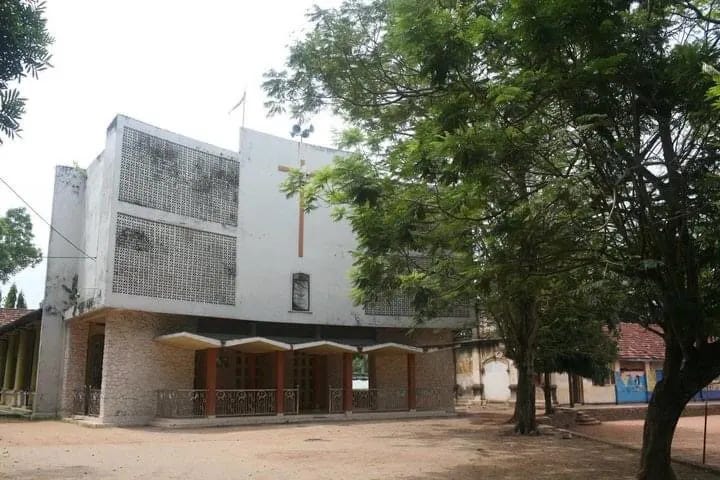Warakanatta
The Seven Villages of Warakanatta
Mudiyansegewatta, a quiet corner of Dalugama, was one of seven villages that made up Warakanatta, a scattered settlement linked by narrow lanes and old friendships. Tucked behind the old Catholic church, it was a place where tall, shady marthu trees dropped their long, dry pods across the path, crunching underfoot. When the wind stirred their branches, they whispered like palm fronds, as if the name Warakanatta itself came from their soft rustle. The other villages — Dalugamgoda, Nungamugoda, Kohalwila, Eriyawetiya, Wewelduwa, and Dippitigoda — stretched out like a string of pearls along the river, each with its own stories.
In the sixties, Warakanatta was far from suburban. Tiled houses sat amid open gardens, where evenings arrived gently, carrying the scent of coconut oil and wet earth. There were no cars in Mudiyansegewatta, only the odd black Peugeot 403 or an old Hillman, their horns bleating the Angelus prayer call on Sundays. Everyone else rode bicycles or walked, bare feet tracing the soft red dust of the lanes.
Life moved slowly then. Men worked at the railway yard or Colombo harbour; women tended vegetable plots — long beans twisting on bamboo poles, pumpkins fattening under broad leaves, chillies drying on mats in the sun. Evenings were for watering plants, sweeping yards, and listening to the temple drum echo across the river. Mudiyansegewatta was small but proud, with the best jackfruit trees, the cleanest well, and the most punctual postman. Every house knew every other — who had a daughter getting married, whose son failed the exam, whose old dog had just given birth to a handful of squeaking puppies.
I remember racing my neighbours to that well, dodging marthu pods, convinced the fastest would get the sweetest jackfruit. We’d collapse in laughter under the trees, the air thick with dust and delight. Those moments, simple as they were, stitched me to Mudiyansegewatta.
At the heart of it all stood the church, its whitewashed walls cracked but dignified, its bell tower rising over the marthu trees like a lighthouse over a green sea. On Sundays, children from all seven villages ran down the lanes for catechism, their laughter outpacing the bell. I was among them — a small boy with dust on his knees, clutching a prayer book more scribbled-on than read.

The parish priest, Father Charles, was a short, cheerful man from a distant fishing village, his wiry face lit by a smile. His Sinhala lilt made even scolding sound like a song. Once, when I tripped and tore my shirt running to catechism, he knelt beside me, dusted my knees, and said, “God loves a boy who runs to Him, even if he falls.” His homilies were fierce, his palms large, his heart enormous. Every evening at six, he rang the Angelus himself, standing on the church steps, the bell’s soft, unhurried toll rolling through the lanes, over vegetable plots, and into homes where lamps were lit.
Not far from the church lived Anthony, the groundskeeper and church’s man Friday, who kept the marigolds blooming through every season. His face, lined like marthu bark, smelled faintly of tobacco and soil. Children adored him for his stories — of saints who walked on water, of a mango tree that bore golden fruit. One evening, as I helped him sweep the churchyard, I asked about a crumbling stone well behind the marthu trees. “Some things stay,” he said, pointing to the well’s worn rim, “even when the world changes.” His words stuck with me, a quiet promise in a place that felt eternal.
Another evening, I found him on the low church wall, watching the sunset. “Anthony,” I asked, “why do the bells sound sad sometimes?” He smiled, his teeth a small constellation in the dusk. “Because they remember,” he said. “Even bells remember.”
That was Warakanatta — a place where the wind, the bells, and the people seemed to hold memories in their bones.
When rain came, it fell gently. The smell of wet dust mingled with jasmine from the gardens. Children ran barefoot through puddles, chasing paper boats that the rainwater carried away. When the rain stopped, the world shone — leaves washed clean, frogs croaking from ditches, lamps glowing behind blue curtains. Standing on the lane, you’d hear a radio playing a Sinhala song, someone chopping firewood, a dog barking far off, and the slow creak of a bicycle as men returned home.
There was peace in those days, a contentment that asked for little. We didn’t know the word progress, though it was already on its way, wrapped in asphalt and streetlights.
Decades passed, and progress crept in — first with streetlights, then wider roads, until Warakanatta blurred into something new. Today, it’s hardly recognisable. The lanes are paved, the church grounds fenced, the vegetable gardens replaced by houses with iron gates. The marthu trees are gone, cut down for wider roads that hum where bicycles once creaked. The church has had a facelift, its walls now gleaming gold, more temple than sanctuary. Yet the old bell, hung in the tower since 1965, still remains, though the rope is new and the paint smells fresh.
I stop by the church gate sometimes, the roar of three-wheeler traffic drowning out the past. But when I close my eyes, the bell’s deep, old voice calls me back — over the rooftops, through the ghosts of marthu trees — to my mother lighting the evening lamp, my father pedalling home, Anthony tending his marigolds, and Father Charles ringing the Angelus under a fading sky. In that moment, I hear Warakanatta’s whisper, soft and enduring, carrying across time the memory of a place that knew peace.
Comments
Post a Comment